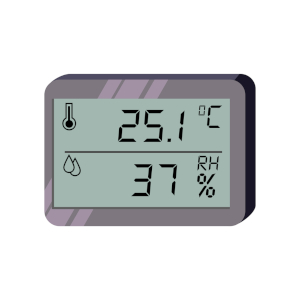 Humidity sensors are electronic devices that measure the humidity in an environment and then convert the findings into electrical signals. Some calculate the humidity and temperature and then compare that to the maximum amount of humidity for air at the given temperature. These are called relative humidity (RH) sensors. Other humidity sensors record only the humidity without relation to temperature. These are called absolute humidity (AH) sensors.
Humidity sensors are electronic devices that measure the humidity in an environment and then convert the findings into electrical signals. Some calculate the humidity and temperature and then compare that to the maximum amount of humidity for air at the given temperature. These are called relative humidity (RH) sensors. Other humidity sensors record only the humidity without relation to temperature. These are called absolute humidity (AH) sensors.
- RH Sensors- There are various types of RH sensors and each work differently. Most RH sensors utilize different means to gather and record electrical charge or voltage that is directly related to the humidity level in the room.
- AH Sensors- A common AH sensor is a thermal sensor that uses two probes. One is kept dry in nitrogen while the other is exposed to the humidity in the environment. The difference in each probe’s findings are calculated to determine the absolute humidity level.
- Installation- The location of a humidity sensor is important in gathering accurate findings. The sensor should be installed in a sheltered area, four to six feet above the ground. The north side of a building is also recommended as to avoid direct sunlight which can impact the relative humidity. You also want to avoid areas with excessive moisture, fumes, or heat from nearby equipment that could disrupt accurate findings.
The humidity sensors we offer here at Global Sensors are accurate and affordable. We have the experience and knowledgeable staff you need to help you select the best sensor. We’ll provide you with all of the information you need to make sure your sensors are set up properly. We’re dedicated to helping you find the sensors you need, even if they aren’t our products so call us today.


